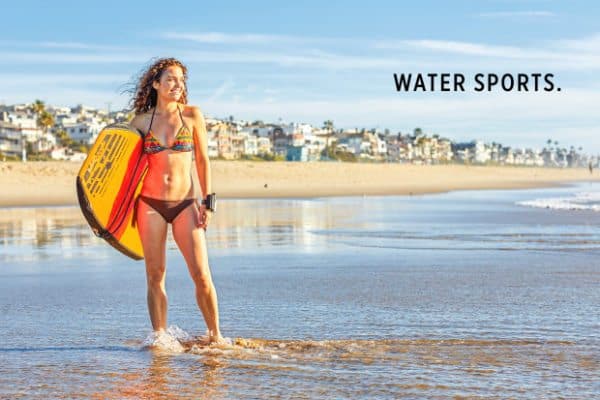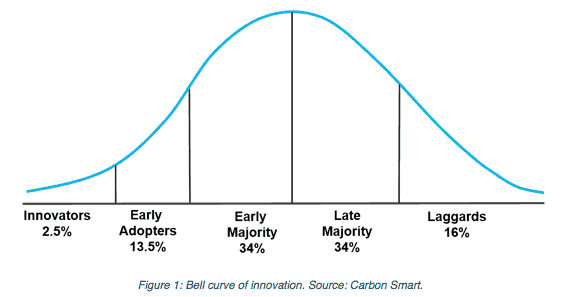After losing a close friend in a drowning accident, California-based entrepreneur, Tom Agapiades, created Kingii. Founded in early 2014, Kingii is dedicated to water safety, and is on a mission to affect the sad statistic of more than 372,000 people who die from drowning accidents each year.
Before digging into Kingii’s Indiegogo crowdfunding campaign, I had no idea how big this problem is. After reading up a little, I started asking around (team members and close friends), if anyone knew how many people die from drowning each year and why? Of course, no one knew, but more surprisingly, everyone had been affected in the same way as Agapiades was. In my own case, a university professor of mine past this way, but for others, the experiences were much more personal.
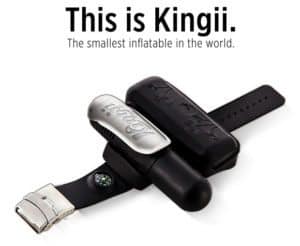 Research from the World Health Organization shows that men and children are most at risk of drowning. The highest drowning rates worldwide are among children 1-4 years old, and the second highest are for children 5-9 years old. The main reason for this is lapse of supervision. Furthermore, men are more at risk than women are – and the higher drowning rates are typically associated with riskier behavior in the water (such as swimming alone), alcohol consumption, and boating.
Research from the World Health Organization shows that men and children are most at risk of drowning. The highest drowning rates worldwide are among children 1-4 years old, and the second highest are for children 5-9 years old. The main reason for this is lapse of supervision. Furthermore, men are more at risk than women are – and the higher drowning rates are typically associated with riskier behavior in the water (such as swimming alone), alcohol consumption, and boating.
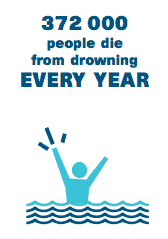 Obviously, any product that will help us overcome these problems should be welcomed by the markets. Accidents on and in the water are unfortunately commonplace, and for companies such as Kingii who are on a water-safety-mission, it may seem odd that a crowdfunding campaign was the right way to go to market.
Obviously, any product that will help us overcome these problems should be welcomed by the markets. Accidents on and in the water are unfortunately commonplace, and for companies such as Kingii who are on a water-safety-mission, it may seem odd that a crowdfunding campaign was the right way to go to market.
Therefore, we picked up the phone and had a chat with Michael Brendle (Director of Sales/Europe at Kingii) about, what crowdfunding has meant for the company, here, right before the campaign comes to its conclusion. Kingii’s case is a good example of how small companies leverage crowdfunding platforms for more than just funding. We have discussed this in several articles, and provided a deeper analysis in “5 Massive Impacts of Crowdfunding” (available on apen-designs.com) and we were curious to see how Kingii’s experiences would fit into this framework.
Stats and campaign context
The Kingii campaign launched on June 29, and sought to raise $65,000. Within a couple of hours it had raised more than $400,000; a Funding-to-Goal (“FtG”) ratio above 600% which puts Kingii in the rare group of campaigns that overfund vastly above expectations. The featured reward is the “Save Yourself” package which includes one Kingii and two cylinders (the price is $79 and it will retail for $89 later on).
In “5 Massive Impacts of Crowdfunding,” we identified five areas where crowdfunding can greatly affect startups and small businesses like Kingii. Funding (and in Kingii’s case extreme overfunding) is a natural candidate. Product- and Market validation are other important areas. Branding and brand building efforts are easily detected when we look for the ways that companies leverage previous campaign success stories in their follow-on messaging. Finally, social capital from the point of view of building out stakeholder bases and communities both before, during and after a campaign, are integral for most campaign creators.
Kingii applied the minimum-run approach when setting their funding goal. Had the company only raised the $65,000 goal, they would be able to conclude the production run without exposing the company. Michael shared, “We picked the $65,000 funding goal because we had the mold and other primary tools already, and this amount would cover materials and services even for a relatively small batch.”
“We knew that we would be able to scale up the production line if we should receive more than the $65,000, and we had a clear vision for how additional funds should be used,” said Michael, and continued, “This is exactly the process we’re in right now! We use the additional funding we get in to extend our distribution capability and ensure that customers in smaller market will receive their products faster and cheaper.”
Regarding the price point, Michael explained why the feature product sells at $79. “This price point ensures that we will always be able to use the best material available, and not make any compromises in terms of our production line or the materials we use. We have to pay attention to quality – we are dealing here with peoples’ lives! We cannot afford one single flaw because that could literally cost somebody’s life!”
Validation
Every marketer and most entrepreneurs are familiar with Everett Rogers’ textbook “Diffusion of Innovation” which (among other things) explains how customers adapt to new product and services. A small group of “Innovators” will engage and purchase before everyone else and with very little external validation. The slightly larger group of “Early Adopters,” make purchase decisions a little later, but still well before the majority even knows about the new product. (See figure below).
Figure 1: Bell curve of innovation. Source: Carbon Smart.
In order to be successful, a product like Kingii must appeal to more than just “Innovators” and “Early Adopters,” and what many entrepreneurs unfortunately forget is that the customers who are attracted to crowdfunding campaigns (or pre-selling), per definition are “Innovators”; the market doesn’t know that Kingii exists yet!
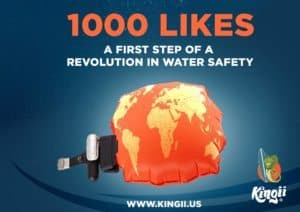 So, why spend the energy on “Innovators” when the success of the company will be driven by traditional retail (including ecommerce)? Michael Brendle explained it this way: “For us it was quite important to use crowdfunding as a market research tool. It gave us an opportunity to learn, who our most responsive target group is. This is important because responsive user groups help elevate the brand and they allow us to reach other target user groups.”
So, why spend the energy on “Innovators” when the success of the company will be driven by traditional retail (including ecommerce)? Michael Brendle explained it this way: “For us it was quite important to use crowdfunding as a market research tool. It gave us an opportunity to learn, who our most responsive target group is. This is important because responsive user groups help elevate the brand and they allow us to reach other target user groups.”
Identifying the “most responsive target group” is important to Kingii because this group can guide the marketing strategy and product development after the crowdfunding campaign; that is, when the product is presented to the “Early/Late Majority and Laggards” in Rogers’ innovation model. This is the most important aspect of Kingii’s crowdfunding campaign: Which applications of the product are more likely to resonate with the “Innovators and Early Adopters” the company can reach?
This is an extremely specific question to address. One that would be impossible to answer had the company approached the market traditionally via retailers. Crowdfunding has enabled Kingii to learn exactly how their first customers will use the product, and this informs later stage marketing strategies as well as product development.
Fluid branding process
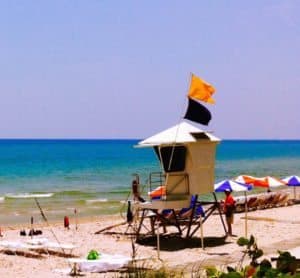 A big challenge when you are selling a single product with several potential customer groups is that your product development, marketing strategy, and branding process need to be tailored to the customers you are trying to reach. For most companies, this means that they simply choose a target customer group (or groups) and see if their strategy sticks.
A big challenge when you are selling a single product with several potential customer groups is that your product development, marketing strategy, and branding process need to be tailored to the customers you are trying to reach. For most companies, this means that they simply choose a target customer group (or groups) and see if their strategy sticks.
“Kingii has so many applications… For children, elderly people, anglers, surfers, in fact anybody doing watersports,” said Michael, and continued, “By using crowdfunding we learned who the most responsive target group is right now. This is the group we should focus on in order to generate revenues, promote the brand, and subsequently attract other target groups.”
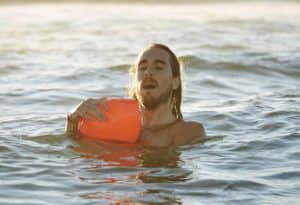 Normally, companies that sell via retailers will therefore have to rely on additional customer research, which at that point will reveal preferences, demographics, and applications for the “Late Majority” (in Rogers’ framework). This means that you (in a sense) are lacking behind your customers’ preferences instead of developing product and brand in alignment with “Innovators” and “Early Adopters.” Michael (and Kingii) identified this problem early on. In his words: “If you enter the market via retailers, you will know whether your products sells, but you will never know to WHOM!”
Normally, companies that sell via retailers will therefore have to rely on additional customer research, which at that point will reveal preferences, demographics, and applications for the “Late Majority” (in Rogers’ framework). This means that you (in a sense) are lacking behind your customers’ preferences instead of developing product and brand in alignment with “Innovators” and “Early Adopters.” Michael (and Kingii) identified this problem early on. In his words: “If you enter the market via retailers, you will know whether your products sells, but you will never know to WHOM!”
Anglers responded surprisingly well to the campaign, and taught Kingii that there is a need for this product within a group that the company can reach into without enduring too high marketing costs. A targeted campaign like that was not on the table before the campaign, but it is today! “We are not stopping at this point and our goals basically to make water safety as comfortable to every single target group as we possible.”
Comment: Beyond startup financing
The Kingii campaign is a great example of how companies apply crowdfunding not just to generate revenues, but more importantly, as a go-to-market strategy. As Michael explains, the big uncertainty around responsive “Innovators” and “Early Adopters” is efficiently reduced to a minimum, and although the company has an ambition to “bring comfortable water safety to everyone” (in his own words), a company needs to start somewhere – the Indiegogo campaign revealed exactly where that is.
Securing an optimal market fit is integral to any company, and a campaign like Kingii’s illustrates neatly how crowd-first tactics can be deployed to reduce costs, efforts, and time in the process.
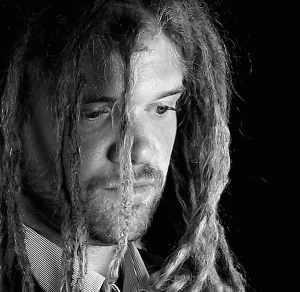 Kevin Berg Grell, PhD is CEO at APEN Designs, a next generation presentation tool for startups and SMEs. Responsibilities include investor and industry relations, financials, and strategy development. Besides this venture, he consults for private enterprises on the implications of crowd dynamics, online investing (incl. crowdfunding and P2P), and Web 2.0 driven business models. Kevin has a PhD in Finance and MSc in Mathematics and Economics. APEN recently published 5 Massive Impacts of Crowdfunding. He also practices capoeira and archery, but rarely simultaneously.
Kevin Berg Grell, PhD is CEO at APEN Designs, a next generation presentation tool for startups and SMEs. Responsibilities include investor and industry relations, financials, and strategy development. Besides this venture, he consults for private enterprises on the implications of crowd dynamics, online investing (incl. crowdfunding and P2P), and Web 2.0 driven business models. Kevin has a PhD in Finance and MSc in Mathematics and Economics. APEN recently published 5 Massive Impacts of Crowdfunding. He also practices capoeira and archery, but rarely simultaneously.
Have a crowdfunding offering you'd like to share? Submit an offering for consideration using our Submit a Tip form and we may share it on our site!


